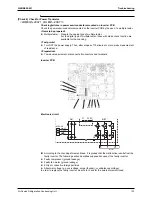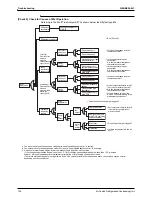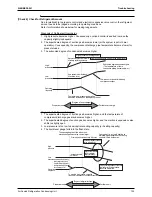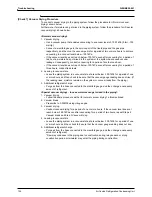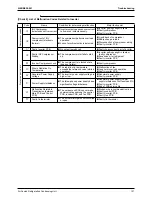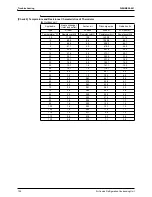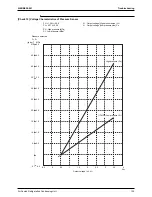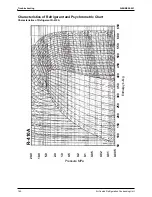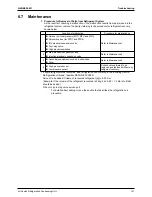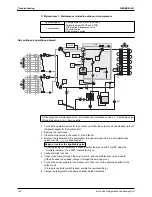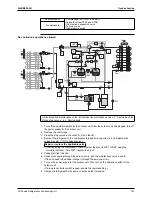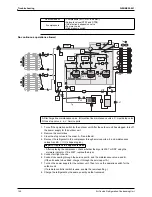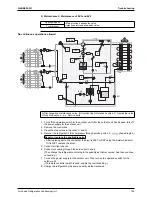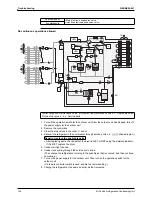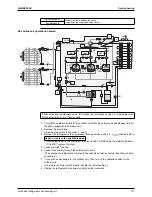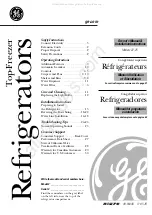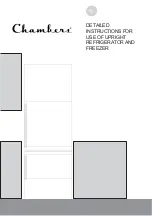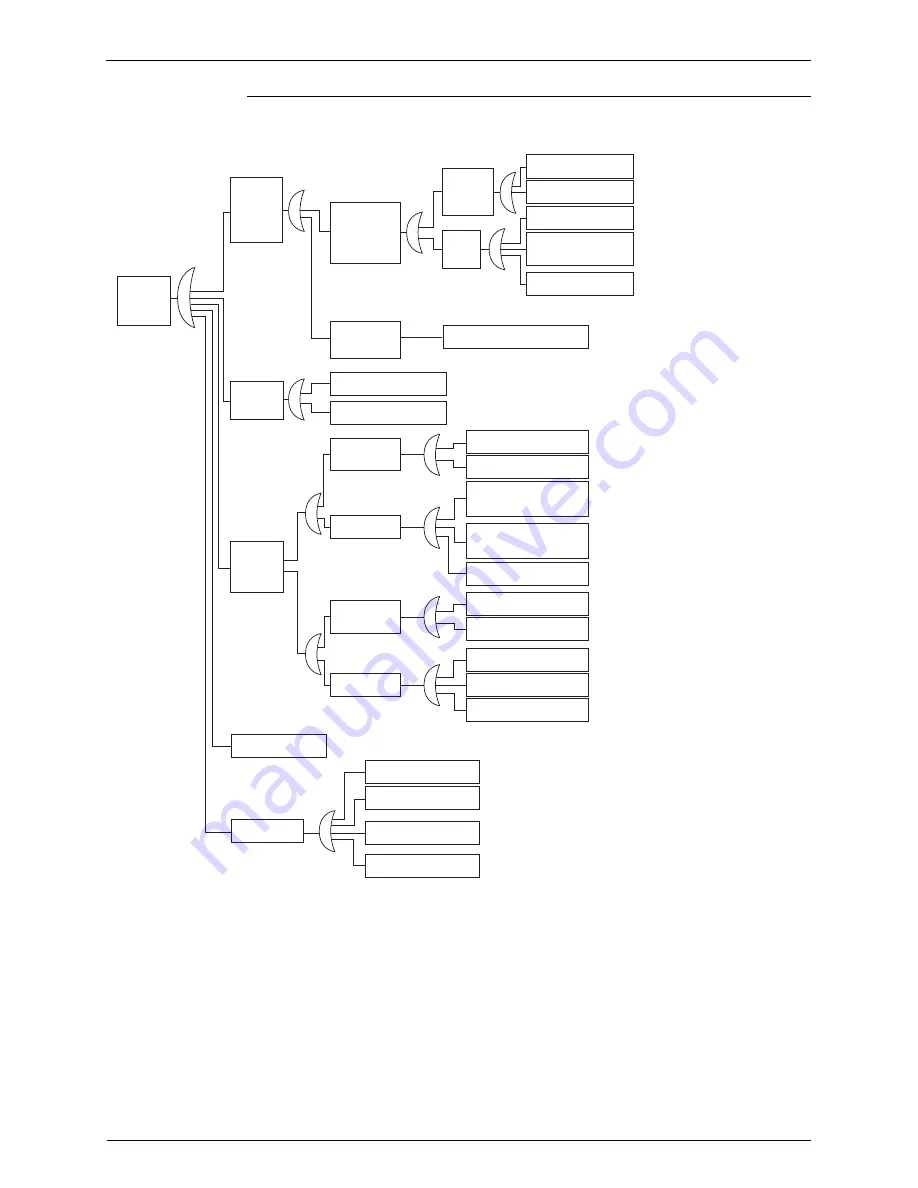
Troubleshooting
SiENBE28-901
132
Air Cooled Refrigeration Condensing Unit
[Check 3] Check for Causes of Overheat Operation
Referring to the Fault Tree Analysis (FTA) shown below, identify faulty points.
Rise in
discharge
pipe temp.
[In cooling]
If the indoor unit
electronic expansion
valve is excessively
throttled:
(See
∗
2)
←
Is the coil resistance and
the insulation normal?
Faulty
discharge
pipe temp.
control
Overheat of
compressor
Faulty
outdoor unit
electronic
expansion
valve (EV3)
(See
∗
1)
Faulty four-
way valve
operation
Overheat due to
damage shaft
Overheat due to faulty
compressor
Faulty indoor
unit electronic
expansion valve
Faulty control
Faulty outdoor
unit electronic
expansion valve
Faulty
superheated
degree
control
Faulty control
[In defrosting]
If the outdoor unit
electronic expansion
valve is excessively
throttled:
(See
∗
3)
Refrigerant gas
shortage
High piping
resistance
Abnormal piping length
Bended or crushed pipe
(Including moisture choke)
Closed stop valve
Faulty
subcool
electronic
expansion
valve
Faulty
control
Four-way valve cut off halfway
Faulty valve coil
Faulty valve body
Faulty low pressure
sensor
Faulty thermistor at
subcool heat
exchanger outlet
Faulty outdoor unit
main PCB
←
Are the voltage
characteristics normal?
←
Is the connector properly
connected?
Are the thermistor resistance
characteristics normal?
←
Is the pressure value on the
Service Checker matched to
the measurement of sensor?
←
Are the temperatures of pipes
connected to the four-way
valve normal?
←
Is the coil resistance and
the insulation normal?
Faulty valve coil
Faulty valve body
Faulty indoor unit gas
pipe thermistor
Faulty indoor unit liquid
pipe thermistor
Faulty outdoor unit main
PCB
Faulty valve coil
Faulty valve body
Faulty low pressure
sensor
Faulty suction pipe
thermistor
Faulty outdoor unit main
PCB
←
Is the connector properly
connected?
Are the thermistor resistance
characteristics normal?
←
Is the connector properly
connected?
Are the thermistor resistance
characteristics normal?
←
Is the coil resistance and
the insulation normal?
←
Are the voltage characteristics normal?
←
Is the connector properly connected?
Are the thermistor resistance
characteristics normal?
←
Is the pressure value on the Service
Checker matched to the
measurement of sensor?
←
See [Check 6].
←
Does the piping length fall
in the permissible range?
←
Visual check
←
Remove moisture by vacuum drying.
←
Check to be sure that the stop valve is open.
∗
1. For subcool electronic expansion valve control, refer to information in "Electronic expansion valve control".
∗
2. The indoor unit electronic expansion valve exerts "superheated degree control" in cooling.
∗
3. The outdoor unit electronic expansion valve (EV1) exerts "superheated degree control" in defrosting.
∗
4. Guideline for superheated degree by which a malfunction is judged as overheat operation
(1) Suction gas superheated degree: Not less than 10°C / (2) Discharge gas superheated degree: Not less than 45°C; provided,
however, that superheated degrees immediately after startup or for drooping control are excluded.
(The values aforementioned are just a guideline. Even if the values fall within the range shown above, these values may be normal
depending on other conditions.)
















